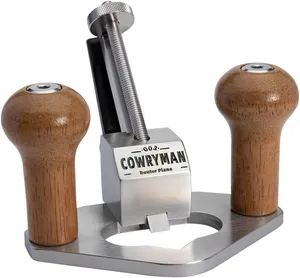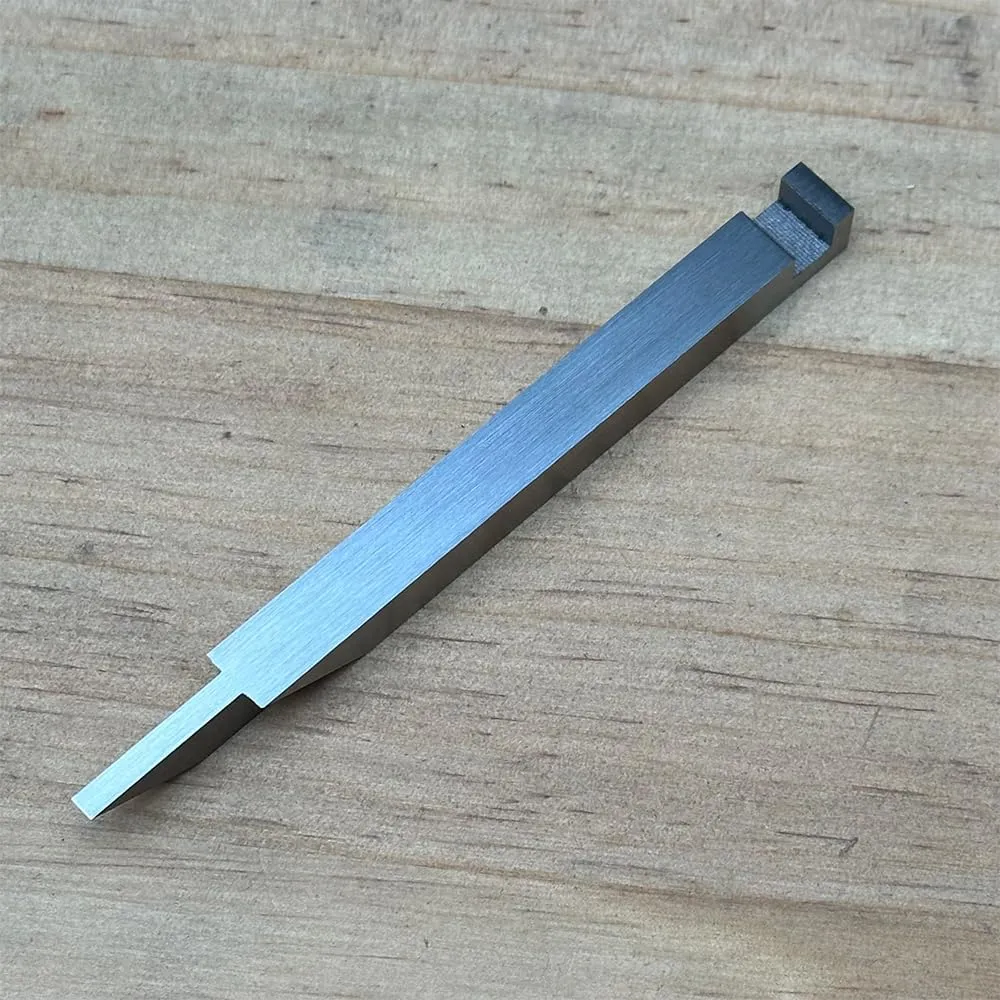WoodItGood is supported by its readers. We may earn an affiliate commission at no extra cost to you if you buy through a link on this page.
If you’re dabblin’ in fine joinery or need to clean up grooves, dados, or mortises, then it’s about time you get yourself a Router Plane.
This specialized tool is perfect for smoothing and leveling the bottom of recesses, and it’s a game-changer when you’re workin’ on precise joints.
But before you jump in headfirst and buy one, let’s chat about what to look for when buyin’ your first router plane.
Our Favorites
Adjustable Depth Control: Precision is Key
When you’re usin’ a router plane, it’s all about precision.
That’s why adjustable depth control is an absolute must. You’ll want a plane that lets you set the cutting depth with ease, so you can sneak up on just the right amount of material to remove.
Look for a router plane with easy-to-use depth adjustment knobs.
This’ll help you dial in exactly how much wood you want to shave off, whether you’re cleanin’ up a dado or leveling the bottom of a mortise.
A good depth adjustment feature gives you more control and helps you avoid takin’ off too much in one pass.
Blade Quality: Sharp and Strong for Clean Cuts
Like any hand plane, the blade quality is key to gettin’ a smooth, clean cut.
Router planes typically come with narrow blades that need to stay sharp to do their job right.
Look for a router plane with blades made from high-quality steel, like A2 or O1, both of which hold an edge well and sharpen up nicely when needed.
Recommended Reading: Hand Plane Types: A Beginner’s Guide for Woodworkers
A sharp blade will make all the difference when you’re cleanin’ up the bottom of a groove or fine-tuning a mortise.
If the blade’s dull, you’ll end up with rough, uneven cuts that’ll make your joints fit like a puzzle with a missing piece… nobody wants that!
Blade Width: Match Your Projects
Router planes come with interchangeable blades in different widths, so you’ll want to pick a blade size that matches the type of work you’re doin’.
For most beginners, a 1/4-inch or 1/2-inch blade is a great place to start.
These sizes cover a lot of ground for cleaning up grooves or dados and will handle most common tasks around the shop.
As you get more experienced, you can expand your blade collection with different sizes to match the width of your cuts.
The key is to start with a blade that’s versatile enough to handle multiple tasks.
Sole Size: Stability for Smooth Results
The sole of a router plane is the flat base that rests on the wood, and the bigger the sole, the more stable the plane.
A larger sole helps distribute the pressure evenly and gives you a more level cut, especially when you’re workin’ on wider surfaces.
If you’re workin’ on bigger projects like wide dados or grooves, you might want to look for a router plane with a larger sole.
It’ll give you more stability and help you keep the tool steady as you work, leading to smoother, more accurate results.
Open vs. Closed Throat: Picking the Right One for Your Needs
When you’re lookin’ for your first router plane, you’ll notice there are two main types: open throat and closed throat.
- Open Throat: This type has an open area around the blade, making it easier to see what you’re doin’ while you’re cuttin’. It’s great for shallow cuts or when visibility is key, like when you’re cleanin’ up narrow dados or fine joinery work.
- Closed Throat: A closed throat provides more support around the blade, which is better for deep cuts or workin’ on tricky grain. It gives you extra stability when you’re removing more material.
For beginners, I’d recommend starting with an open throat router plane since it’ll give you better visibility and control.
Once you’re comfortable, you can always add a closed throat model to your collection if you need it for deeper cuts.
Comfort and Grip: Don’t Overlook the Handle
You’ll want to be comfortable when usin’ your router plane, especially for those detailed jobs that require patience and precision.
Look for a tool with comfortable handles that fit your grip well. Router planes typically have two handles, which allow for better control as you work.
Make sure those handles are smooth and fit your hand well, you’ll be makin’ delicate adjustments, and if the tool feels awkward, it’s gonna make the work harder than it needs to be.
A comfortable, balanced plane is always the way to go.
Blade Locking Mechanism: Keep That Blade Steady
A good router plane needs a strong blade locking mechanism to keep the blade steady while you work. You don’t want the blade slippin’ mid-cut, or you’ll end up with uneven results.
Make sure the plane has a secure, easy-to-use locking system that holds the blade firmly in place.
This is especially important when you’re makin’ precise cuts at varying depths, you need that blade to stay put!
So, when you’re lookin’ to buy your first router plane, remember to check for adjustable depth control, high-quality blades, the right blade width for your projects, a stable sole, an open or closed throat (depending on your needs), comfortable handles, and a solid blade locking mechanism.
Gettin’ the right router plane will make a world of difference when it comes to cleanin’ up grooves and perfectin’ your joinery.
That’s all I’ve got to say about router planes today! If you’ve got any more questions, just holler, and I’ll get back to you quicker than a cat on a hot tin roof. Happy cuttin’, y’all!






